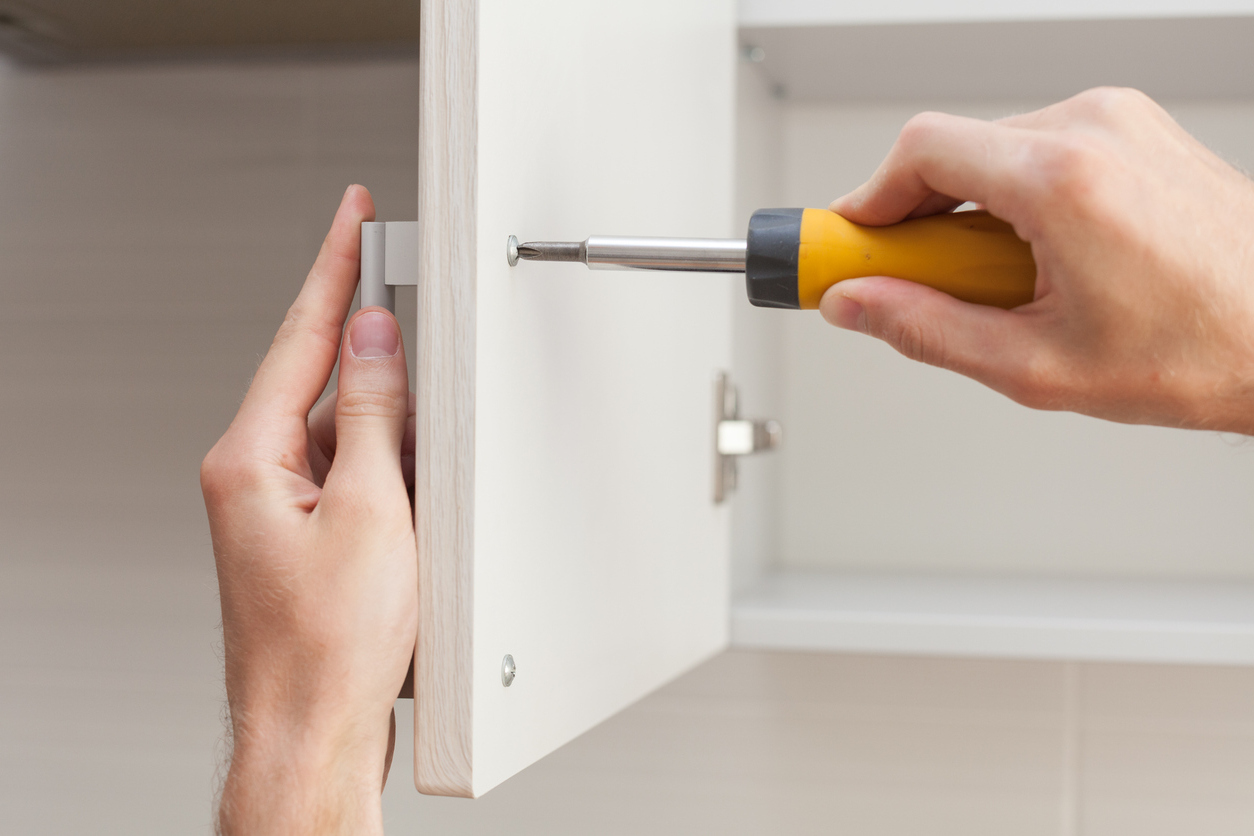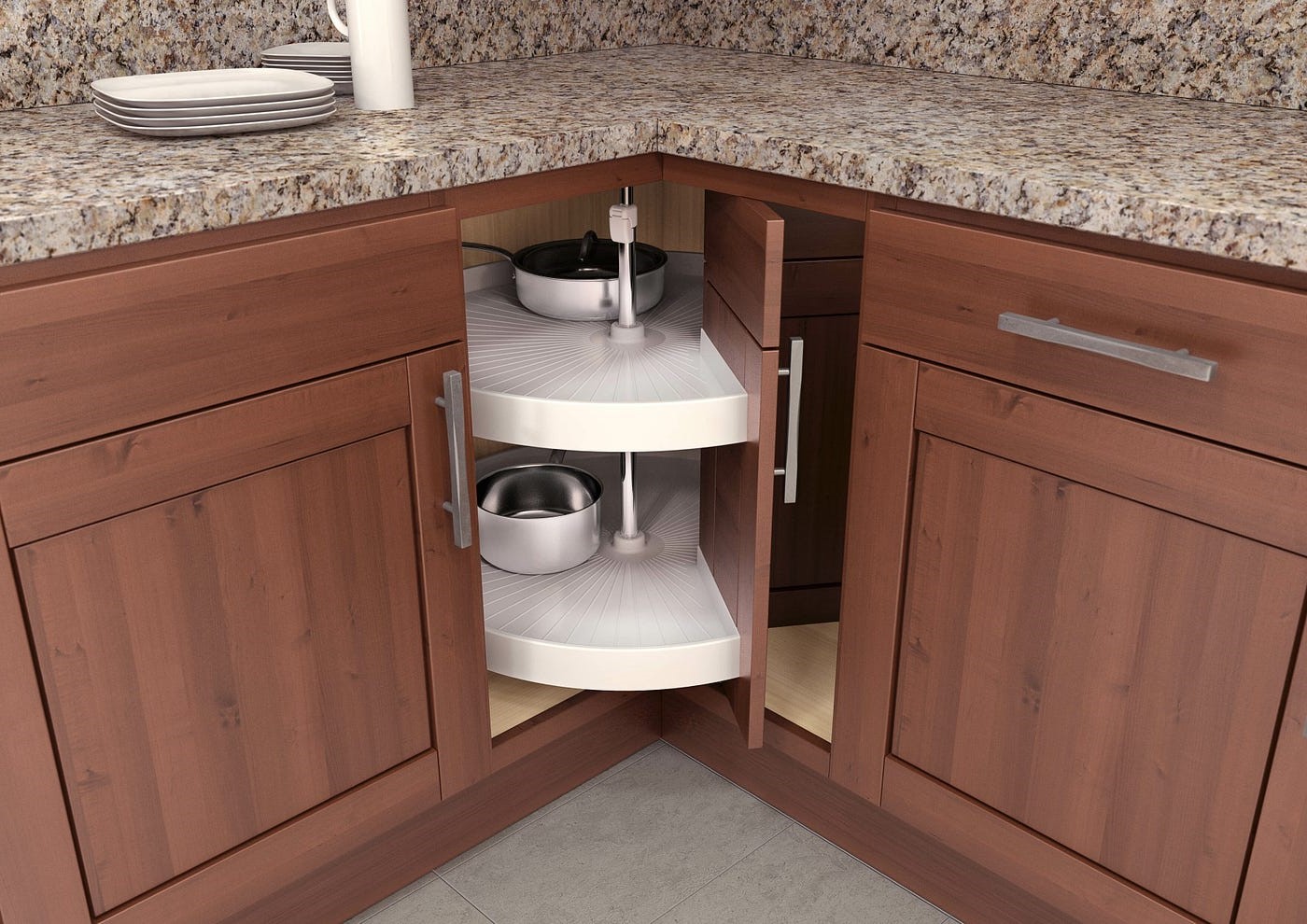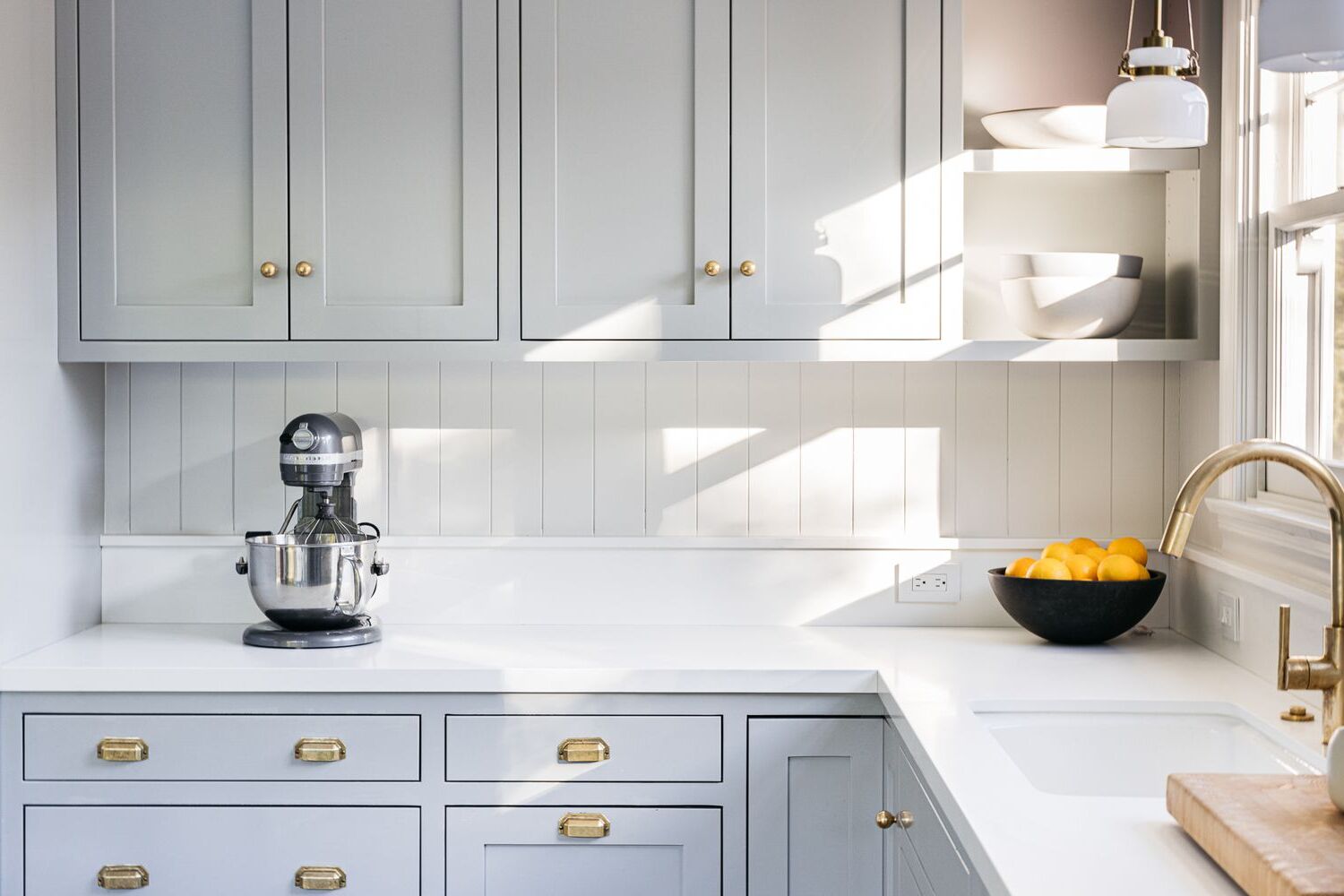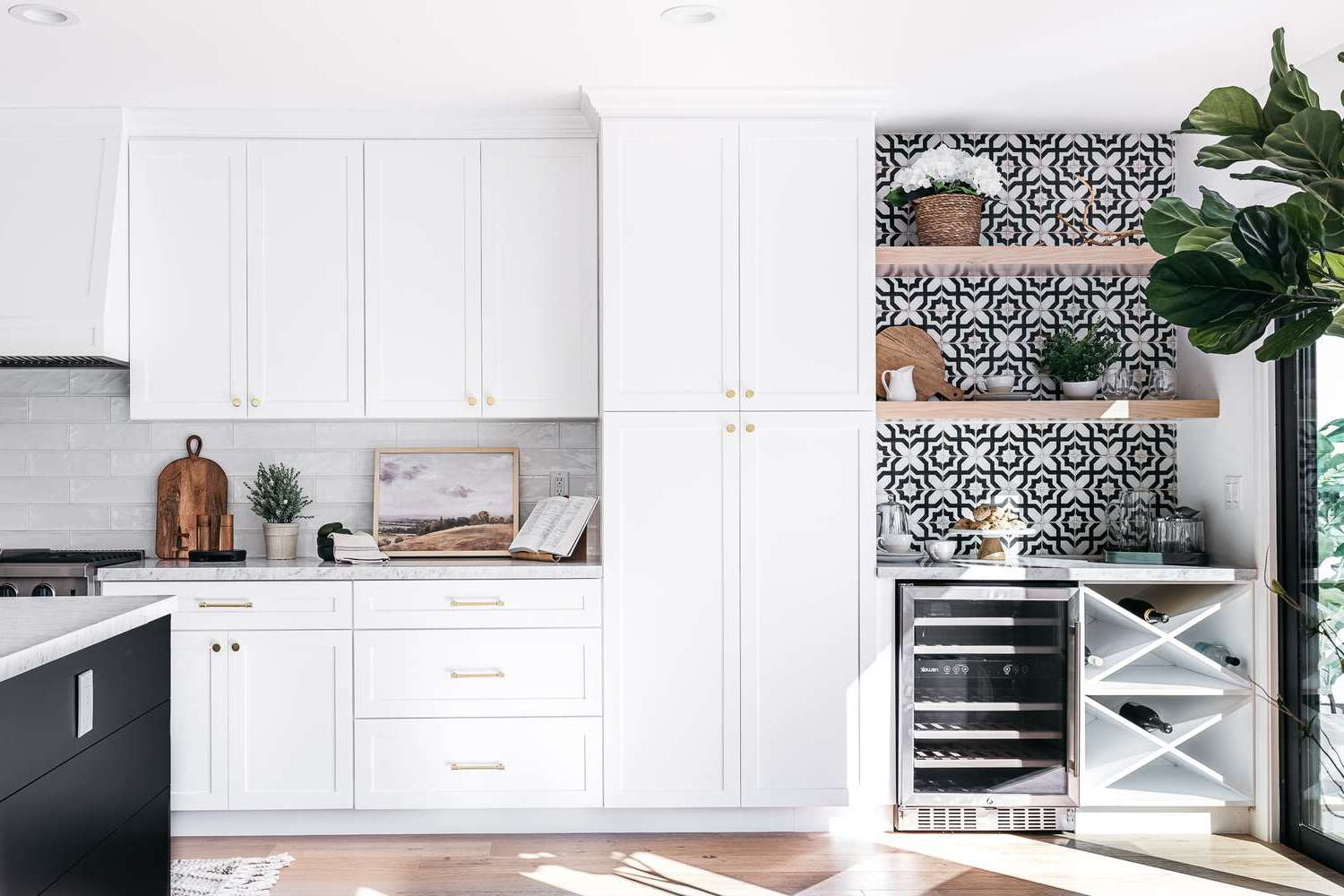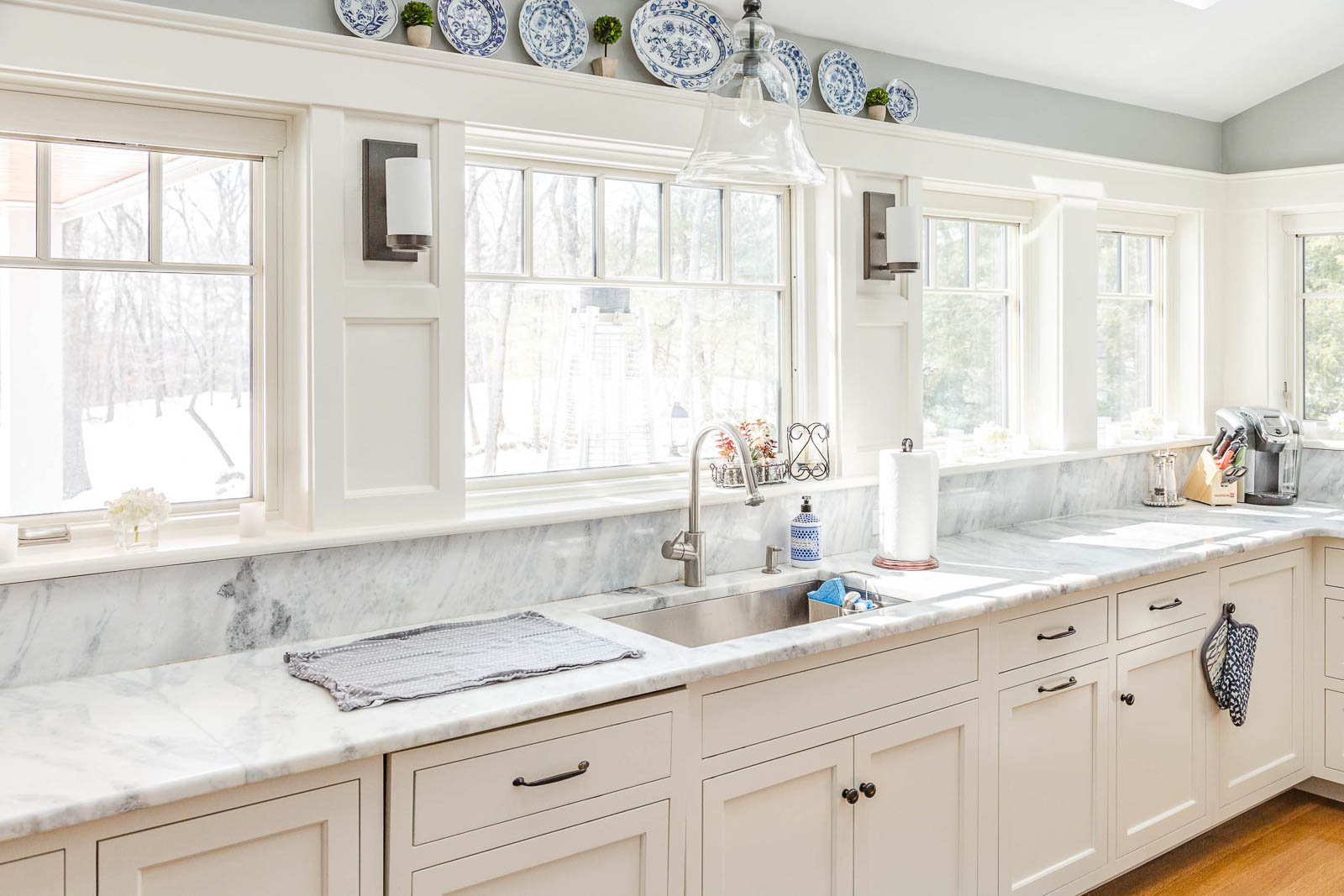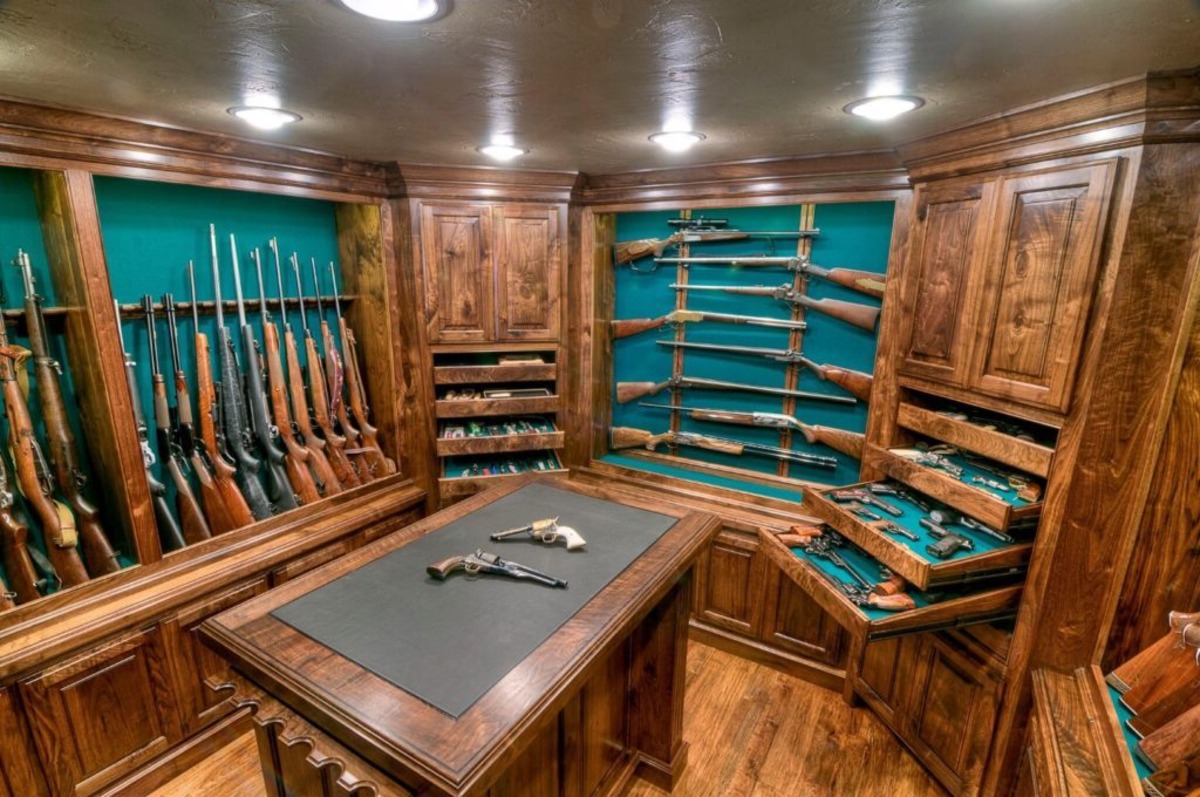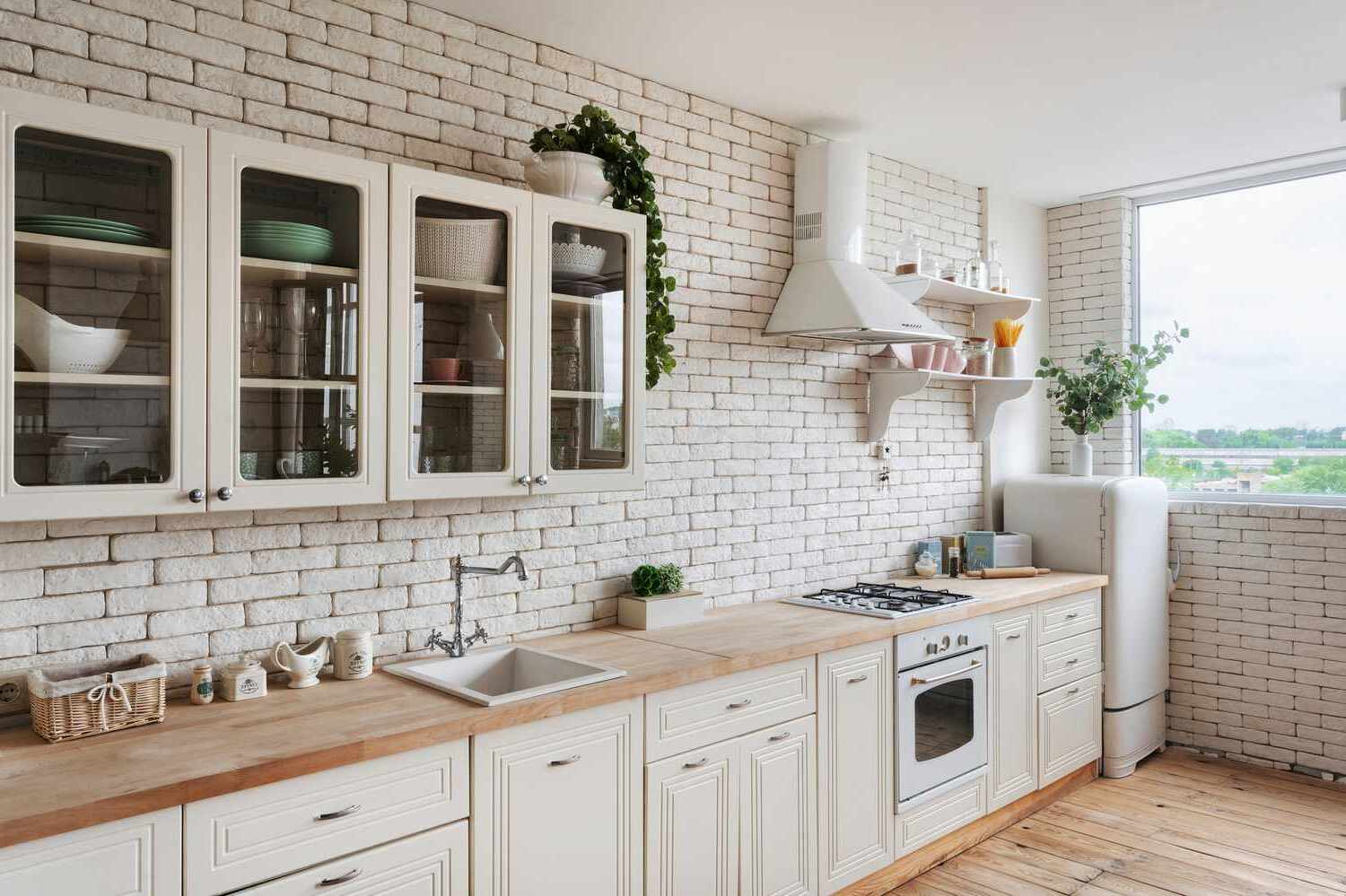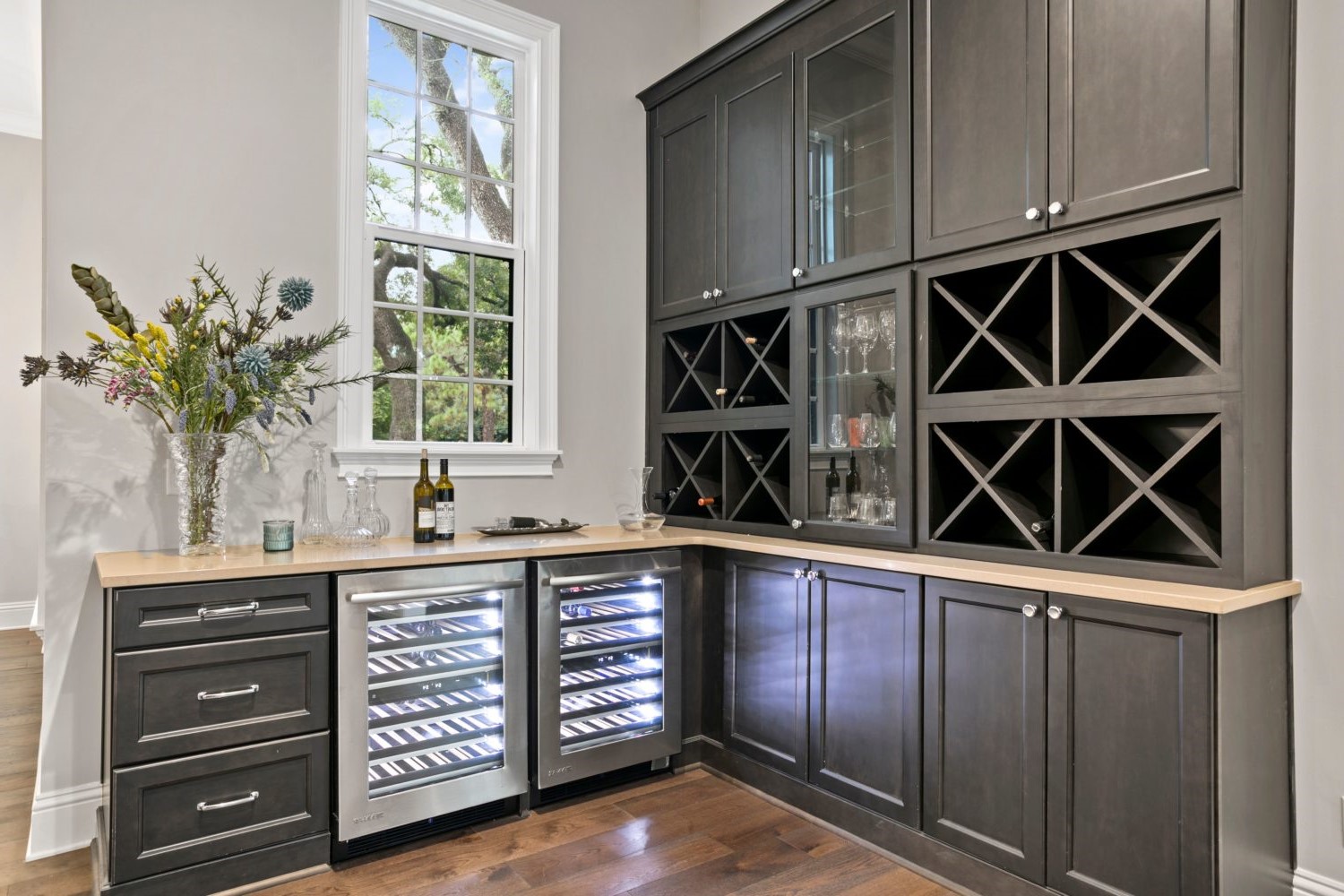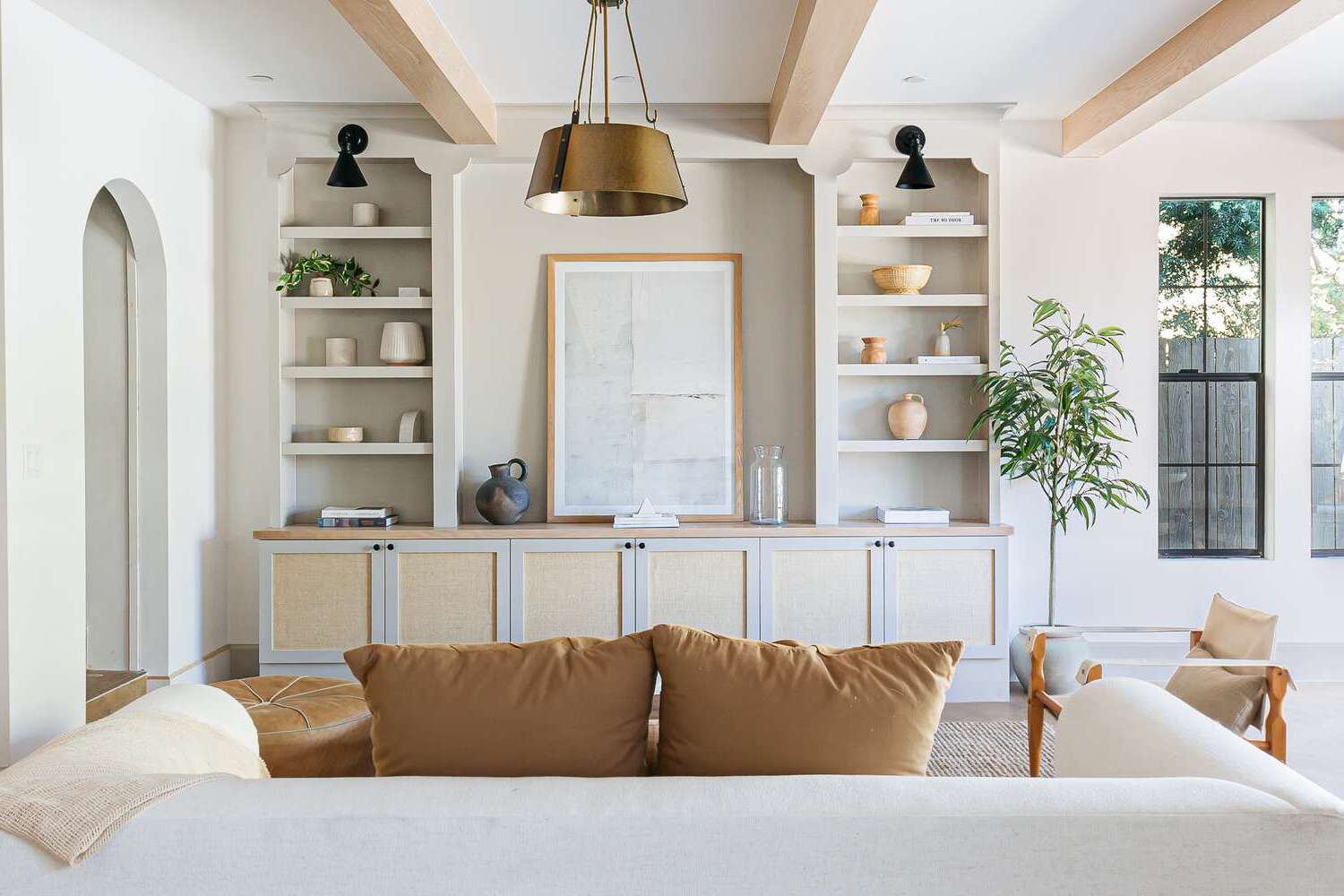Home>Create & Decorate>DIY & Crafts>How To Make Cabinets
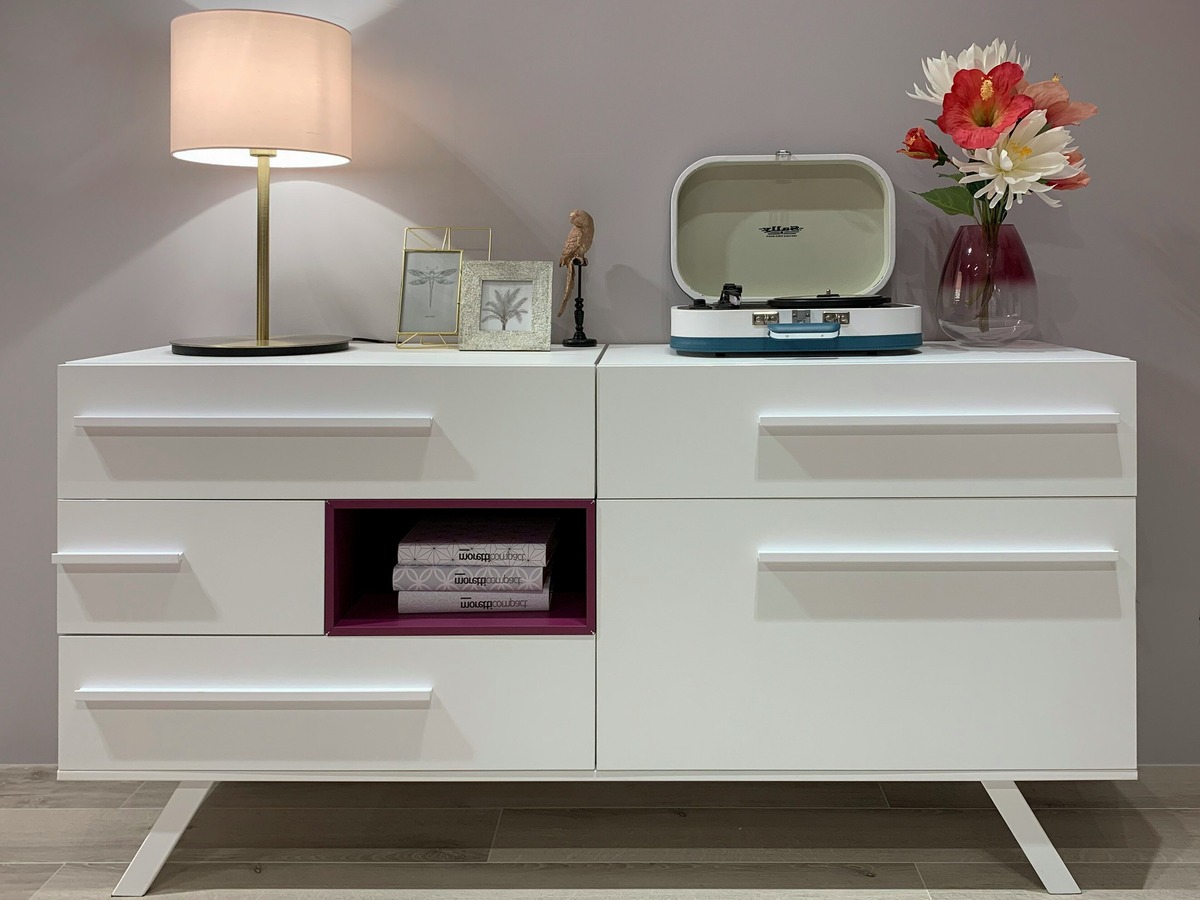

DIY & Crafts
How To Make Cabinets
Published: February 29, 2024

Senior Editor in Create & Decorate, Kathryn combines traditional craftsmanship with contemporary trends. Her background in textile design and commitment to sustainable crafts inspire both content and community.
Learn how to make cabinets with our DIY & Crafts guide. Get step-by-step instructions and expert tips for building your own cabinets at home. Start your project today!
(Many of the links in this article redirect to a specific reviewed product. Your purchase of these products through affiliate links helps to generate commission for Twigandthistle.com, at no extra cost. Learn more)
Introduction
Making your own cabinets can be a rewarding and cost-effective way to add functional and stylish storage solutions to your home. Whether you're looking to upgrade your kitchen, bathroom, or any other space, crafting custom cabinets allows you to tailor the design to your specific needs and preferences. From choosing the type of wood to selecting the hardware and finishes, the process of building cabinets provides an opportunity for creativity and personalization.
Crafting cabinets also offers the satisfaction of creating something with your own hands. It's a chance to unleash your inner craftsman and bring a vision to life. While the task may seem daunting at first, with careful planning and the right tools, you can achieve professional-looking results that enhance the aesthetic and functionality of your living space.
In this comprehensive guide, we'll walk you through the step-by-step process of making cabinets from scratch. From initial planning and design to the finishing touches, you'll gain valuable insights and practical tips to help you tackle this DIY project with confidence. Whether you're a seasoned woodworker or a novice DIY enthusiast, this guide will equip you with the knowledge and inspiration to embark on your cabinet-making journey.
So, roll up your sleeves, gather your tools, and let's dive into the world of cabinet making. With dedication, attention to detail, and a sprinkle of creativity, you'll soon be admiring your handcrafted cabinets, knowing that they were built to meet your exact specifications and reflect your unique style. Let's get started on this fulfilling and rewarding endeavor!
Read more: How to Build Built-In Cabinets
Planning and Designing Your Cabinets
Before diving into the physical construction of your cabinets, it's crucial to invest time in meticulous planning and thoughtful design. This initial phase sets the foundation for a successful and satisfying cabinet-making journey. Here's a detailed breakdown of the essential steps involved in planning and designing your cabinets:
-
Assess Your Needs: Begin by evaluating the specific requirements of the space where the cabinets will be installed. Consider the purpose of the cabinets, the items they will store, and any unique features needed, such as adjustable shelves or specialized compartments.
-
Measurements and Space: Accurate measurements are paramount. Take precise dimensions of the area where the cabinets will be placed, accounting for any obstacles or architectural features. This step ensures that your cabinets will fit seamlessly into the designated space.
-
Style and Aesthetics: Determine the style and aesthetic you want to achieve. Whether it's a sleek modern look, a rustic charm, or a timeless classic design, understanding your preferred style will guide your material and hardware choices.
-
Material Selection: Choose the type of wood or alternative materials for your cabinets. Consider factors such as durability, appearance, and budget. Each material has its unique characteristics, so select one that aligns with your vision and practical needs.
-
Functional Layout: Plan the internal layout of the cabinets to optimize storage and accessibility. This includes deciding on the number of shelves, drawers, and any specialized compartments based on the items that will be stored.
-
Hardware and Finishes: Select the hardware and finishes that complement your design. From handles and knobs to hinges and drawer slides, these details contribute to the functionality and visual appeal of your cabinets.
-
Sketch or Software Design: Create a visual representation of your cabinet design. This can be a hand-drawn sketch or a digital rendering using design software. Visualizing your design helps identify any potential issues and allows for adjustments before the construction phase.
By investing time and attention into the planning and design stage, you set the stage for a successful cabinet-making project. This thoughtful approach ensures that your cabinets will not only meet your practical needs but also reflect your personal style and creativity. With a clear plan in place, you're ready to move on to the next phase of the cabinet-making process.
Gathering Materials and Tools
Gathering the necessary materials and tools is a pivotal step in the cabinet-making process. Having the right supplies at hand ensures a smooth and efficient workflow, allowing you to focus on the craftsmanship without unnecessary interruptions. Here's a comprehensive list of materials and tools you'll need to embark on your cabinet-making journey:
Materials:
-
Wood: Select high-quality wood that aligns with your design and functional requirements. Common choices include oak, maple, cherry, and birch. Consider the thickness and grade of the wood based on the structural integrity and aesthetic appeal you desire for your cabinets.
-
Sheet Goods: Depending on your design, you may need plywood or medium-density fiberboard (MDF) for components such as cabinet backs, shelves, and drawer bottoms. Choose the appropriate thickness and quality to ensure durability and stability.
-
Hardware: This includes hinges, drawer slides, knobs, and handles. Opt for hardware that complements your design and offers smooth functionality. Consider the quantity needed for the specific cabinet configuration you've planned.
-
Fasteners: Stock up on screws, nails, and other fastening hardware required for assembling the cabinet components. Ensure you have a variety of sizes to accommodate different parts of the construction process.
-
Finishing Supplies: If you plan to stain or paint your cabinets, gather the necessary finishing supplies such as wood stain, paint, brushes, and sealant. Additionally, consider any decorative elements such as trim or molding if they are part of your design.
-
Safety Equipment: Prioritize safety by obtaining protective gear such as goggles, gloves, and a respirator for working with wood and finishing products. Safety should always be a top priority in any woodworking project.
Tools:
-
Measuring and Marking Tools: A tape measure, combination square, and marking gauge are essential for accurate measurements and layout markings.
-
Cutting Tools: A table saw, circular saw, and miter saw are fundamental for cutting wood to the required dimensions. Additionally, a jigsaw or band saw may be needed for intricate cuts.
-
Joinery Tools: Depending on your chosen construction method, you may require tools for creating joinery such as a pocket hole jig, biscuit joiner, or dovetail jig.
-
Assembly Tools: Clamps, a hammer, and a nail gun will aid in assembling the cabinet components securely.
-
Finishing Tools: Sandpaper, a paintbrush, and a foam roller are essential for applying finishes to the cabinets.
-
Safety Tools: A well-maintained fire extinguisher and a first-aid kit should be readily accessible in your workspace.
By procuring these materials and tools, you'll be well-equipped to commence the construction of your custom cabinets. With careful planning and the right resources at your disposal, you're poised to bring your cabinet-making vision to life with precision and craftsmanship.
Read more: How to Build DIY Cabinet Doors
Cutting and Preparing Wood
The process of cutting and preparing wood is a critical phase in the construction of custom cabinets. It requires precision, attention to detail, and the use of appropriate tools to ensure that the components are accurately sized and ready for assembly. Here's a detailed overview of the steps involved in cutting and preparing wood for your cabinet-making project:
1. Material Selection and Inspection
Begin by selecting the wood for your cabinets, ensuring that it aligns with your design and functional requirements. Carefully inspect the wood for any defects, such as knots, warping, or cracks, which could affect the structural integrity of the cabinets. It's essential to work with high-quality, defect-free wood to achieve professional results.
2. Accurate Measurements
Using precise measurements based on your design plans, mark the wood for cutting. A tape measure, combination square, and marking gauge are indispensable for ensuring accuracy. Double-check the measurements to avoid errors that could lead to ill-fitting components during assembly.
3. Cutting Techniques
Depending on the design and joinery methods chosen, employ the appropriate cutting techniques. A table saw is commonly used for straight cuts, while a circular saw or miter saw is ideal for crosscuts and angled cuts. For intricate or curved designs, a jigsaw or band saw may be necessary. Always follow safety protocols and use a sharp blade to achieve clean and accurate cuts.
Read more: How to Build Sliding Cabinet Doors
4. Joinery Preparation
If your design incorporates joinery such as dadoes, rabbets, or dovetails, prepare the wood accordingly. Utilize tools such as a router, dado blade, or chisels to create precise joinery that will facilitate strong and seamless connections between the cabinet components.
5. Edge Treatment
After cutting the wood to the required dimensions, consider edge treatments such as chamfering, rounding, or profiling to enhance the visual appeal and safety of the cabinet components. A router equipped with appropriate bits can be used to achieve professional-looking edge profiles.
6. Sanding and Smoothing
Prior to assembly, thoroughly sand the cut wood surfaces to remove any roughness or imperfections. Start with coarse-grit sandpaper and progress to finer grits for a smooth and uniform finish. This step not only enhances the aesthetics but also ensures a professional fit during assembly.
By meticulously executing the cutting and wood preparation process, you set the stage for the successful assembly of your custom cabinets. Attention to detail, precision cutting, and thorough preparation are essential for achieving the desired functionality and visual appeal in the final cabinet product. With the wood components accurately sized and prepared, you're ready to progress to the next phase of the cabinet-making journey.
Assembling the Cabinet Frame
Assembling the cabinet frame marks a pivotal stage in the cabinet-making process, where individual components come together to form the foundational structure of the cabinets. This phase requires precision, attention to detail, and a methodical approach to ensure that the frame is sturdy, square, and ready to support the cabinet's functional elements. Here's a comprehensive overview of the steps involved in assembling the cabinet frame:
Read more: How To Build A Corner Cabinet
1. Layout and Organization
Before commencing the assembly, lay out all the pre-cut components in an organized manner. This includes the sides, top, bottom, and any additional structural elements such as support rails or stretchers. Organizing the components ensures a seamless and efficient assembly process, minimizing the risk of errors or confusion during construction.
2. Dry Fit and Alignment
Prior to applying any adhesives or fasteners, conduct a dry fit of the components to verify their alignment and fit. This step allows you to make any necessary adjustments to ensure that the frame components align perfectly and form precise right angles at the corners. Attention to alignment during the dry fit stage is crucial for the structural integrity and visual appeal of the finished cabinets.
3. Joinery and Fastening
Depending on your chosen construction method, employ the appropriate joinery techniques to secure the frame components. Common methods include using wood glue along with reinforcing joinery such as dowels, biscuits, or pocket screws. Additionally, reinforce the joints with corner clamps to maintain precise alignment during the fastening process.
4. Square and Stability Check
After securing the joints, verify the squareness of the frame using a carpenter's square. Ensuring that the frame is perfectly square is essential for the overall stability and functionality of the cabinets. Any discrepancies in squareness should be addressed and corrected before proceeding to the next steps of the assembly process.
Read more: How To Build A Refrigerator Cabinet
5. Structural Reinforcement
For added structural integrity, consider incorporating corner braces or brackets at the frame corners. These reinforcements provide additional support and stability, particularly for larger or heavier cabinets. Secure the braces using appropriate fasteners, ensuring a snug and secure fit to bolster the overall strength of the frame.
6. Quality Inspection
Once the frame is assembled, conduct a thorough inspection to ensure that all joints are secure, the frame is square, and there are no visible defects or imperfections. Address any issues promptly to guarantee that the frame serves as a solid foundation for the subsequent cabinet construction phases.
By meticulously following these steps, you'll successfully assemble a sturdy and precisely aligned cabinet frame, laying the groundwork for the addition of shelves, drawers, and doors. The meticulous attention to detail and structural integrity at this stage sets the stage for a seamless and professional cabinet-making process. With the cabinet frame securely assembled, you're ready to progress to the next phase of bringing your custom cabinets to life.
Adding Shelves and Drawers
With the cabinet frame securely assembled, the next phase of the cabinet-making process involves adding shelves and drawers, transforming the basic frame into a functional storage unit. This stage requires careful consideration of spacing, alignment, and structural support to ensure that the shelves and drawers not only fit seamlessly but also provide efficient and accessible storage solutions. Here's a detailed breakdown of the steps involved in adding shelves and drawers to your custom cabinets:
-
Shelf Placement and Support: Begin by determining the placement of the shelves within the cabinet. Consider the items that will be stored and adjust the shelf positions accordingly. Install shelf support pins or adjustable shelf hardware to accommodate varying storage needs. Ensure that the shelf supports are level and securely anchored to the cabinet sides for stability.
-
Drawer Box Construction: If your design includes drawers, construct the drawer boxes using precise measurements and joinery techniques. Utilize dovetail joints, dadoes, or rabbets for strong and durable drawer construction. Pay attention to the smooth operation of the drawer slides, ensuring that the drawers glide effortlessly within the cabinet.
-
Drawer Slide Installation: Install the drawer slides within the cabinet frame, ensuring that they are level and aligned for smooth drawer operation. Whether using side-mount, under-mount, or center-mount slides, follow the manufacturer's guidelines for accurate installation. Test the drawer slides to verify smooth and consistent movement before proceeding.
-
Shelf and Drawer Fronts: Attach the front panels to the shelves and drawers, ensuring that they align seamlessly with the cabinet frame. Pay attention to consistent spacing and reveal around the edges for a professional and uniform appearance. Use clamps to secure the fronts in place before fastening them to the cabinet components.
-
Adjustability and Alignment: Verify the alignment and adjustability of the shelves and drawers to accommodate different storage requirements. Test the smooth operation of the drawers and ensure that the shelves are level and stable. Make any necessary adjustments to guarantee that the storage elements function seamlessly within the cabinet.
-
Finish and Detailing: Apply any desired finishes to the shelves, drawers, and front panels to enhance their durability and visual appeal. Consider adding decorative elements such as trim or molding to accentuate the aesthetic of the cabinet. Thoroughly inspect the shelves and drawers for any imperfections and address them before proceeding.
By meticulously following these steps, you'll seamlessly integrate shelves and drawers into your custom cabinets, creating versatile and organized storage spaces tailored to your specific needs. The careful attention to detail and precision at this stage ensures that the cabinets not only serve a functional purpose but also contribute to the overall aesthetic and practicality of your living space. With the shelves and drawers seamlessly integrated, your custom cabinets are one step closer to completion, ready to serve as a testament to your craftsmanship and attention to detail.
Installing Cabinet Doors and Hardware
The installation of cabinet doors and hardware represents a pivotal phase in the cabinet-making process, where the functional and aesthetic elements come together to bring the custom cabinets to completion. This stage demands precision, attention to detail, and a keen eye for alignment and functionality to ensure that the doors operate smoothly and the hardware enhances both the visual appeal and usability of the cabinets.
Read more: How To Build Cabinet Doors
1. Door Alignment and Hinge Installation
Begin by carefully aligning the cabinet doors within the frame, ensuring consistent spacing and a uniform reveal around the edges. Utilize shims or spacers to maintain precise alignment during the installation process. Install the hinges, ensuring that they are securely anchored to the cabinet frame and that the doors open and close smoothly without any binding or misalignment.
2. Hardware Selection and Installation
Select the appropriate knobs, handles, or pulls that complement the style and functionality of your cabinets. Whether opting for sleek modern hardware or classic and ornate designs, ensure that the chosen hardware aligns with the overall aesthetic of the cabinets. Install the hardware with precision, verifying consistent placement and secure attachment to the doors and drawer fronts.
3. Soft-Close Mechanisms and Adjustments
Consider incorporating soft-close mechanisms for the cabinet doors and drawers to enhance user convenience and minimize noise. Install the soft-close hardware according to the manufacturer's guidelines, ensuring that the mechanisms operate smoothly and effectively. Make any necessary adjustments to achieve optimal performance and quiet operation.
4. Quality Inspection and Testing
After installing the doors and hardware, conduct a thorough inspection to verify the alignment, functionality, and overall visual appeal. Test the doors and drawers to ensure that they open and close seamlessly, and that the hardware operates as intended. Address any issues promptly to guarantee that the doors and hardware contribute to the overall quality and usability of the custom cabinets.
By meticulously following these steps, you'll seamlessly integrate the cabinet doors and hardware, elevating the functionality and visual appeal of your custom cabinets. The careful attention to detail and precision at this stage ensures that the doors operate smoothly and the hardware enhances both the aesthetic and practical aspects of the cabinets. With the doors securely installed and the hardware adding the finishing touches, your custom cabinets are poised to become a standout feature in your living space, reflecting your craftsmanship and dedication to quality.
Read more: DIY: How to Paint Kitchen Cabinets
Finishing Touches and Final Assembly
As you approach the final stages of your cabinet-making journey, the focus shifts to the finishing touches and the ultimate assembly of the meticulously crafted components. This phase encompasses the application of finishes, the integration of additional details, and the culmination of all elements into a cohesive and functional cabinet unit. Here's a detailed exploration of the essential steps involved in the finishing touches and final assembly of your custom cabinets:
-
Surface Preparation: Before applying any finishes, meticulously prepare the surfaces of the cabinets. This involves thorough sanding to achieve a smooth and uniform texture, ensuring that the wood is free from any imperfections or blemishes. Pay particular attention to the edges and corners, where precision and attention to detail are crucial for a professional finish.
-
Finish Application: Select the appropriate finish for your cabinets, whether it's a clear varnish to showcase the natural beauty of the wood, a rich stain to add depth and character, or a vibrant paint to infuse personality and style. Apply the finish evenly and consistently, following the grain of the wood for a seamless and professional appearance. Multiple coats may be necessary to achieve the desired depth and durability.
-
Detailing and Trim: Consider adding decorative elements such as trim, molding, or embellishments to enhance the visual appeal of the cabinets. These details can elevate the overall aesthetic and contribute to a cohesive and polished look. Pay attention to precise measurements and seamless integration to ensure a harmonious and refined finish.
-
Final Assembly: With the individual components now complete and finished, proceed with the final assembly of the cabinets. Carefully align and secure the various elements, ensuring that the shelves, drawers, doors, and hardware come together seamlessly. Verify the structural integrity and functionality of the assembled cabinets, making any necessary adjustments to guarantee a flawless fit and operation.
-
Quality Inspection: Conduct a comprehensive inspection of the completed cabinets, scrutinizing every detail for quality and precision. Verify the alignment of doors and drawers, assess the functionality of the hardware, and ensure that the finish is consistent and flawless. Address any minor imperfections or discrepancies to achieve a truly professional result.
By meticulously executing the finishing touches and final assembly, you bring your custom cabinets to fruition, ready to take their place as functional and visually striking elements within your living space. The dedication to precision, attention to detail, and the infusion of your personal style culminate in a tangible and enduring testament to your craftsmanship and creativity. With the finishing touches complete and the final assembly perfected, your custom cabinets stand as a testament to your dedication and skill, poised to enhance and elevate the aesthetic and functionality of your home.
Conclusion
In conclusion, the journey of crafting custom cabinets from scratch is a testament to the fusion of creativity, precision, and dedication. From the initial planning and design phase to the meticulous assembly and finishing touches, every step in the process contributes to the creation of functional and visually captivating storage solutions tailored to specific needs and preferences.
The art of cabinet making transcends the mere construction of storage units; it embodies the expression of individual style, the pursuit of craftsmanship, and the fulfillment of practical requirements. Each carefully measured cut, precisely aligned joint, and thoughtfully selected finish reflects the dedication and attention to detail invested in the creation of custom cabinets.
As the final assembly is perfected and the finishing touches applied, the culmination of the cabinet-making journey yields a tangible and enduring testament to the artisan's skill and vision. The completed custom cabinets stand as more than functional elements within a living space; they embody the essence of personalized craftsmanship, serving as a reflection of the creator's dedication to quality and aesthetics.
The process of making cabinets from scratch not only yields practical storage solutions but also fosters a sense of accomplishment and pride. Whether it's the satisfaction of witnessing a vision come to life or the joy of utilizing handcrafted cabinets that perfectly align with one's lifestyle, the rewards of this DIY endeavor extend beyond the finished product.
Ultimately, the journey of crafting custom cabinets is a celebration of creativity, precision, and personalization. It is a testament to the transformative power of woodworking, where raw materials are shaped into functional artistry that enhances and elevates the living space. With dedication, attention to detail, and a sprinkle of creativity, the process of making cabinets from scratch becomes a fulfilling and rewarding endeavor, resulting in custom cabinets that stand as a testament to the creator's craftsmanship and vision.

